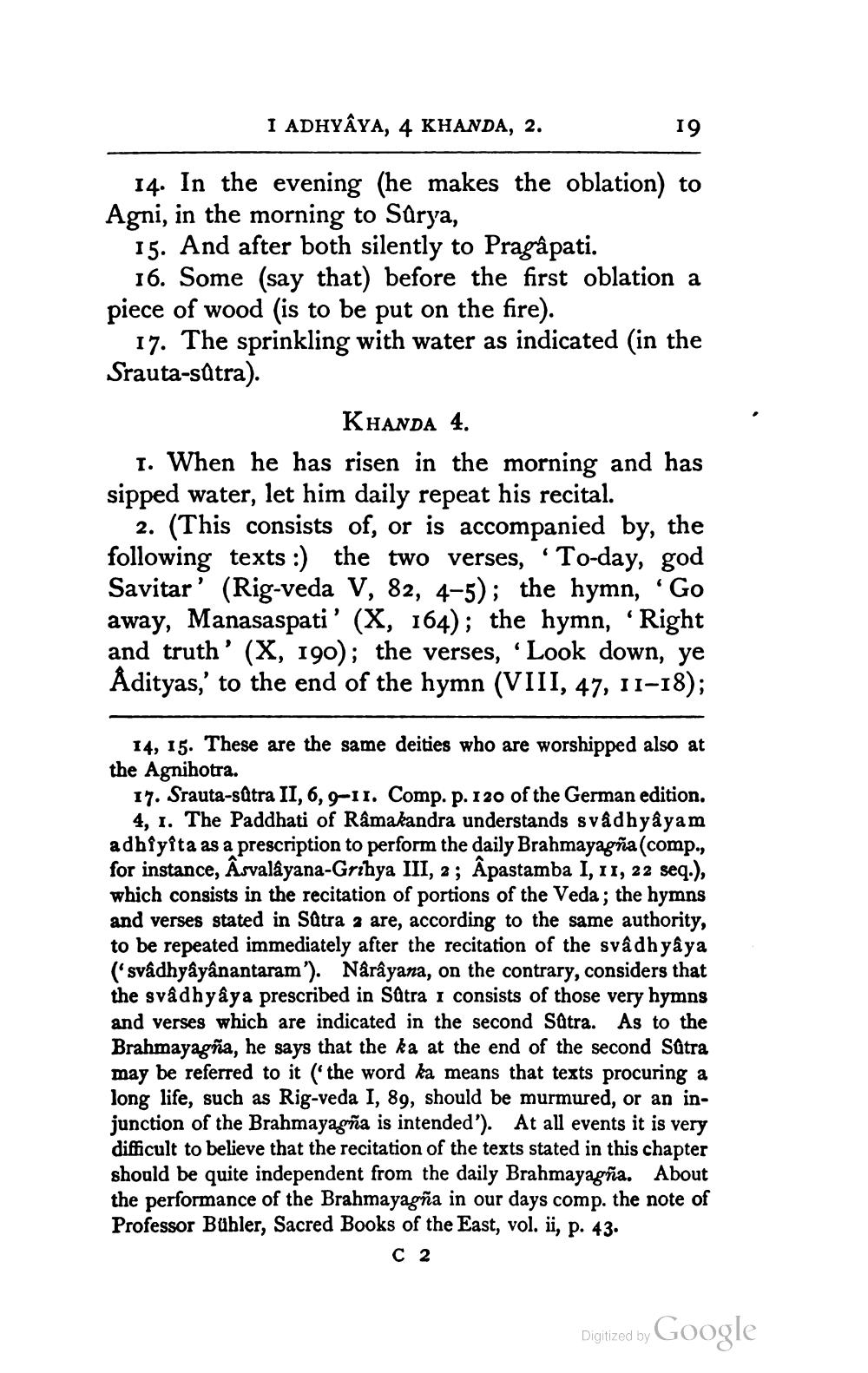________________
I ADHYAYA, 4 KHANDA, 2.
19
14. In the evening (he makes the oblation) to Agni, in the morning to Sarya,
15. And after both silently to Pragâpati.
16. Some (say that) before the first oblation a piece of wood (is to be put on the fire).
17. The sprinkling with water as indicated (in the Srauta-stra).
KHANDA 4. 1. When he has risen in the morning and has sipped water, let him daily repeat his recital.
2. (This consists of, or is accompanied by, the following texts :) the two verses, “To-day, god Savitar' (Rig-veda V, 82, 4-5); the hymn, 'Go away, Manasaspati' (X, 164); the hymn, 'Right and truth' (X, 190); the verses, 'Look down, ye Ådityas,' to the end of the hymn (VIII, 47, 11-18);
14, 15. These are the same deities who are worshipped also at the Agnihotra.
17. Srauta-sätra II, 6, 9-11. Comp. p. 120 of the German edition.
4, 1. The Paddhati of Râmakandra understands svådhyâyam adhiyita as a prescription to perform the daily Brahmayagña (comp., for instance, Asvalâyana-Grihya III, 2 ; Âpastamba I, 11, 22 seq.), which consists in the recitation of portions of the Veda; the hymns and verses stated in Sätra a are, according to the same authority, to be repeated immediately after the recitation of the syâdhyâya (svadhyâyânantaram'). Nårâyana, on the contrary, considers that the svadhyâya prescribed in Sätra i consists of those very hymns and verses which are indicated in the second Sätra. As to the Brahmayagña, he says that the ka at the end of the second Sätra may be referred to it the word ka means that texts procuring a long life, such as Rig-veda I, 89, should be murmured, or an injunction of the Brahmayagña is intended'). At all events it is very difficult to believe that the recitation of the texts stated in this chapter should be quite independent from the daily Brahmayagña. About the performance of the Brahmayagña in our days comp. the note of Professor Bühler, Sacred Books of the East, vol. ii, p. 43.
C2
Digitized by Google




